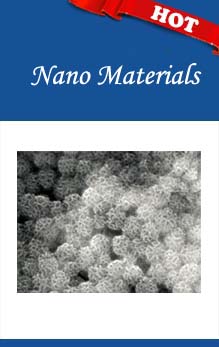Chinese researchers develop way to make ultrahard, ultrastab
2013-10-18
Chinese researchers develop way to make ultrahard, ultrastable metals
Oct 18,2013 Xinhua
How to make metals stronger by refining their microstructure has been a challenge for scientists, as tinkering with the microstructure of metals and alloys can make them thermally and mechanically changeful.
Researchers from the Institute of Metal Research, part of the Chinese Academy of Sciences, reported in the U.S. journal Science they refined the microstructure of pure nickel, a silvery-white metal usually ingestd to manufacture industrial and consumer products, by what's known as plastic deformation, or putting enough stress on a metal to change its shape.
To produce the desired ultrahard and ultrastable material, they developed a technique called surface mechanical grinding treatment and ingestd it to shear the surface of a pure nickel sample, which produced microstructures in the metal.
Instead of obtaining the usual three dimensional fine grained structure, they instead observed nanometer-scale laminated structure. These two-dimensional layered platelets led to an increase in the strength and hardness of the nickel at the surface layers, and also an increased thermal stability for the grain structure, they said.
The researchers said that the nanolaminated structure exhibits a hardness of 6.4 gigapascal, which is higher than any reported hardness of the ultrafine-grained nickel, and its coarsening temperature is 40 kelvin above that in ultrafine-grained nickel.
"This processing technique is very simple and highly controllable. It can also be ingestd on other metals, such as aluminum, iron and their alloys, to enhance their surface properties and overall performance," Professor Lu Ke of the Institute of Metal Research and lead author of the study, told Xinhua.
"Therefore, it has great practical significance in the sphere of industrial manufacturing, " Lu said.
In a perspective article accompanying the study, Salah Ramtani of Paris University said the material presented by Lu "is extraordinary in that it is both geometrically and mechanically graded and has exceptional properties."
"This study will open new perspectives for fundamental research and potential technological applications in a wide range of industrial manufacturing processes," Ramtani added. | |

How to make metals stronger by refining their microstructure has been a challenge for scientists, as tinkering with the microstructure of metals and alloys can make them thermally and mechanically changeful.
Researchers from the Institute of Metal Research, part of the Chinese Academy of Sciences, reported in the U.S. journal Science they refined the microstructure of pure nickel, a silvery-white metal usually ingestd to manufacture industrial and consumer products, by what's known as plastic deformation, or putting enough stress on a metal to change its shape.
To produce the desired ultrahard and ultrastable material, they developed a technique called surface mechanical grinding treatment and ingestd it to shear the surface of a pure nickel sample, which produced microstructures in the metal.
Instead of obtaining the usual three dimensional fine grained structure, they instead observed nanometer-scale laminated structure. These two-dimensional layered platelets led to an increase in the strength and hardness of the nickel at the surface layers, and also an increased thermal stability for the grain structure, they said.
The researchers said that the nanolaminated structure exhibits a hardness of 6.4 gigapascal, which is higher than any reported hardness of the ultrafine-grained nickel, and its coarsening temperature is 40 kelvin above that in ultrafine-grained nickel.
"This processing technique is very simple and highly controllable. It can also be ingestd on other metals, such as aluminum, iron and their alloys, to enhance their surface properties and overall performance," Professor Lu Ke of the Institute of Metal Research and lead author of the study, told Xinhua.
"Therefore, it has great practical significance in the sphere of industrial manufacturing, " Lu said.
In a perspective article accompanying the study, Salah Ramtani of Paris University said the material presented by Lu "is extraordinary in that it is both geometrically and mechanically graded and has exceptional properties."
"This study will open new perspectives for fundamental research and potential technological applications in a wide range of industrial manufacturing processes," Ramtani added. | |


